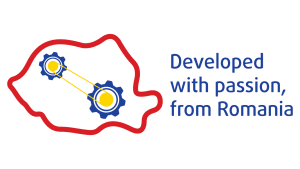MongoDB - NoSql database
Course description:
NoSQL databases are a response to the exponentially growing volumes of data generated from modern distributed systems with many actors. The biggest issue here are social networks where actors are individual and legal persons in the network communicating and presenting themselves. A similar example is the Internet itself, or the hardware and software that make up the Internet. As a growing number of Internet users and the volume of data transferred and the width of the connection, increasing the number of devices, services and applications, producing and exchanging records of incidents, normal operation, as well as statistical data. All these records, like data from social networks contain valuable information. And to handle these large data we need tools and because relational databases doesn’t offer the power we need, we use tools like NoSQL database.
This MongoDB – NoSql database course serves as an overview of the differences between relational (“SQL”) and NoSQL databases, not only from the focus, but also various pitfalls, ways of implementation, management and operation of necessary knowledge and skills to great use NoSQL databases.
Target audience:
• Technical directors, IT project managers, database administrators, systems architects
• All IT professionals who want to get better than a thorough knowledge of NoSQL databases
Prerequisites for this MongoDB – NoSql database course:
• Basic knowledge of SQL query language
• Basic knowledge of any database management system (DBMS)
Course module structure
Module 1: Introduction
– Basic concepts and principles of NoSQL
– NoSQL vs. RDBMS – a brief introduction
– Distributed systems and CAP
– ACID vs. BASE
Module 2: NoSQL categories and usage
– Using NoSQL – where YES and where NO
– What is NoSQL? – Categorization – Key-value stores, Column-oriented, Graph, Document oriented
– Pitfalls and necessary balance
Module 3: MongoDB – overview
– History, current status
– Architecture
– Data Types
– Management Tools
Module 4: MongoDB – installation, maintenance, administration
– Installation
– Backup & restore
– User management
Module 5: MongoDB – quering
– Inserting documents
– Editing documents
– Selection of documents, operators, aggregation
– Deleting documents
– Indexes
Note:
Every student has assigned to him his own virtual lab environment setup.Additional details:
To attend this course, you need to have:• PC/Laptop with internet access
• Updated web browser
MongoDB - NoSql database
-
CATEGORY: Database Course
-
DURATION: 2 days
-
SKILL LEVEL: Associate
-
LECTURES: 5 lessons
- PRICE: On-Demand
- CATEGORY: Database Course
- DURATION: 2 days
- SKILL LEVEL: Associate
- LECTURES: 5 lessons
Course description:
NoSQL databases are a response to the exponentially growing volumes of data generated from modern distributed systems with many actors. The biggest issue here are social networks where actors are individual and legal persons in the network communicating and presenting themselves. A similar example is the Internet itself, or the hardware and software that make up the Internet. As a growing number of Internet users and the volume of data transferred and the width of the connection, increasing the number of devices, services and applications, producing and exchanging records of incidents, normal operation, as well as statistical data. All these records, like data from social networks contain valuable information. And to handle these large data we need tools and because relational databases doesn’t offer the power we need, we use tools like NoSQL database.
This MongoDB – NoSql database course serves as an overview of the differences between relational (“SQL”) and NoSQL databases, not only from the focus, but also various pitfalls, ways of implementation, management and operation of necessary knowledge and skills to great use NoSQL databases.
Target audience:
• Technical directors, IT project managers, database administrators, systems architects
• All IT professionals who want to get better than a thorough knowledge of NoSQL databases
Prerequisites for this MongoDB – NoSql database course:
• Basic knowledge of SQL query language
• Basic knowledge of any database management system (DBMS)
Course module structure
Module 1: Introduction
– Basic concepts and principles of NoSQL
– NoSQL vs. RDBMS – a brief introduction
– Distributed systems and CAP
– ACID vs. BASE
Module 2: NoSQL categories and usage
– Using NoSQL – where YES and where NO
– What is NoSQL? – Categorization – Key-value stores, Column-oriented, Graph, Document oriented
– Pitfalls and necessary balance
Module 3: MongoDB – overview
– History, current status
– Architecture
– Data Types
– Management Tools
Module 4: MongoDB – installation, maintenance, administration
– Installation
– Backup & restore
– User management
Module 5: MongoDB – quering
– Inserting documents
– Editing documents
– Selection of documents, operators, aggregation
– Deleting documents
– Indexes
Note:
Every student has assigned to him his own virtual lab environment setup.Additional details:
To attend this course, you need to have:• PC/Laptop with internet access
• Updated web browser
Be the first to hear about our latest courses by signing up to our mailing list.
Contact

